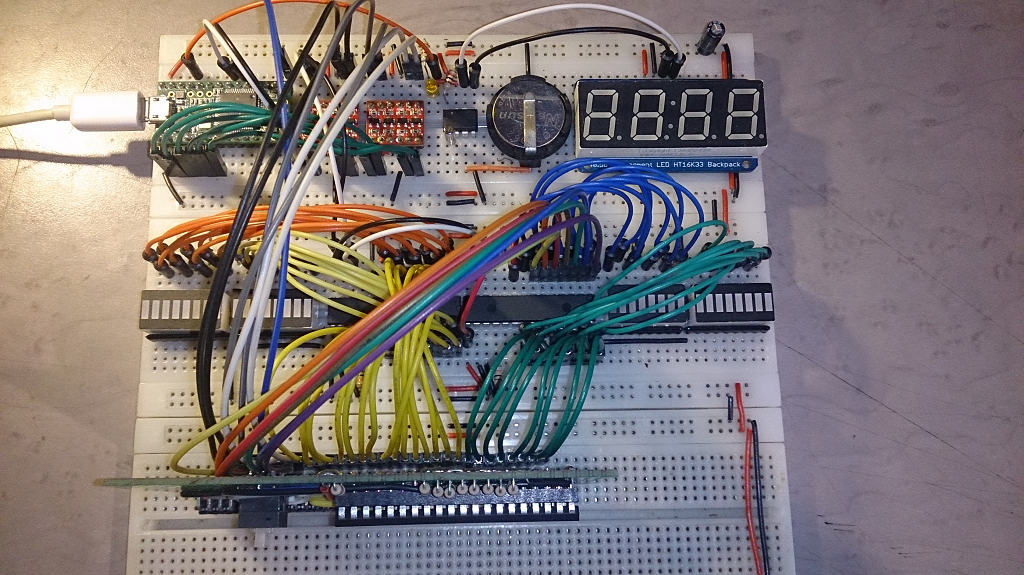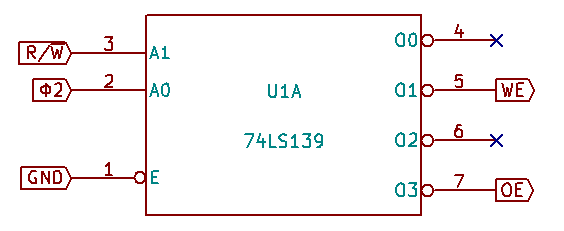So yeah, I now have a working 6502 mini cpu board but no IO... And still no crystal :S
And before I go on and build more modules, let me test this puppy out first.

This is my personal doomsday device... TeensyIO, connected to the IO/65 CPU module ;)
A breadboarded Teensy 3.1 running at 96MHz, a battery backed DS1307, 7segment led display and two MCP23017's for port extensions. With 64K ram, 256K program space and 32 additional pins, I can use this setup for almost everything. So in this case I use it to control the cpu and clock, and provide all "I/O" virtually.
In the current configuration, the DS1307 and led display are not connected to the I2C bus, since I'm not really using them. This allows me to crank up the I2C bus speed dramatically to 2.4MHz!!! Not that I will be needing the speed, since I am clocking the CPU at very slow rates (2Hz and up) so I can "see" what is going on.
The CPU is being fed with an Apple I memory map, with a virtual PIA for keyboard and display over the serial connection. At 2Hz it takes about a minute for the woz monitor to be ready for input.
Now I can focus on the memory map for this platform. I'll end up with several designs to allow for different setups to use. For the first usable design, I want to keep the part count as low as possible, while maintaining a moderate compatibility with existing designs.
The first thing to focus on is providing separate OE/WE signals from R/W and PHI2. Most designs use a single inverter and two nand gates. After some careful consideration, I figured that one half of a 74xx139 2-to-4 decoder can do the job too.

With that out of the way, all that remains is filling in the gaps. The lower half of the map will be assigned to a single 32K block. And since we can use the other half of the decoder, we'll just split the upper half of the map into 8K blocks. This allows for a lot of flexibility on decoding the remaining blocks.

At this stage I have the decoding hardware down to 2 ic's: a 74xx04 and a 74xx139. I'll use the unused pins of the header to expose these signals to other modules.
I also realize I'm wasting 5 of the inverters on the 74xx04. On my first development version I think I'll just create the inverter in DTL and add 32K ram and 8K rom to save on parts.
See you soon in part #3 :)
 djBo
djBo
Discussions
Become a Hackaday.io Member
Create an account to leave a comment. Already have an account? Log In.